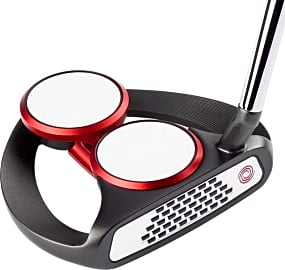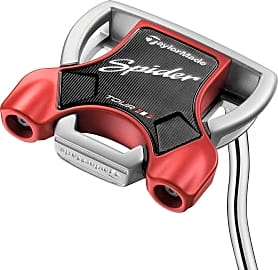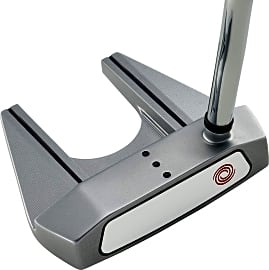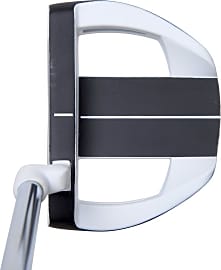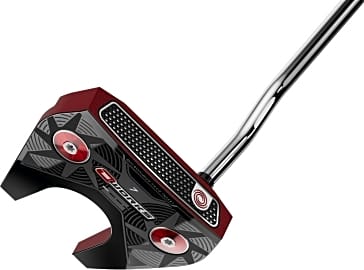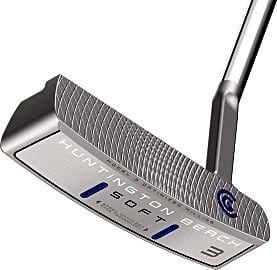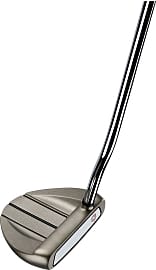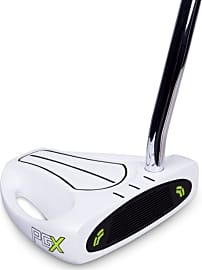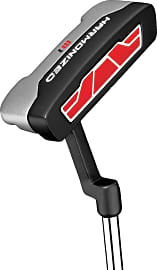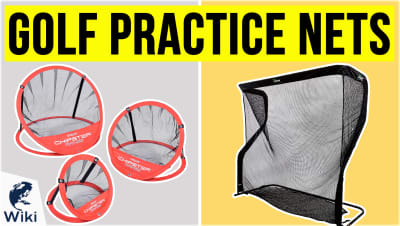The 10 Best Golf Putters

This wiki has been updated 42 times since it was first published in June of 2015. Though it may be the smallest club in your bag, it is undoubtedly one of the most important, so make sure you choose your putter wisely. After much research, we've found the best available on the market, which includes fairly inexpensive models for those who are on a budget or just starting out, as well as professional-quality options for those serious about shaving strokes off their game. When users buy our independently chosen editorial choices, we may earn commissions to help fund the Wiki.
Editor's Notes
March 17, 2021:
We haven't made any significant changes to our recommendations, just like many manufacturers haven't made significant changes to their putters. One change that they do make, though, relates to availability. Some of our top top picks were discontinued, so we've replaced them with more recent releases that, presumably, should improve upon the older models. The newcomers include the TaylorMade Spider Double Bend, which can help even seasoned players to find their line and stay on the ball, and the Callaway Odyssey White Hot OG, which comes in a wide variety of configurations and is great for skilled players. We've also updated to the Cleveland Huntington Beach #3 from the #1. Cleveland does make several larger, more modern putters, but we want to highlight this one, in particular, because purists who want a traditionally sized putter head will appreciate it.
April 11, 2019:
No matter how good your driver and iron shots are, golf games are often won or lost on the green, so choosing a high-quality putter is very important. There is no such thing as a miracle club that will immediately cut 10 or 20 strokes off your game, but after a bit of practice, a good putter can definitely improve your score. If you are just getting into the game, you may not be ready to buy a premium putter, and that's ok, but you still want to make sure you get a quality model that provides a consistent hit even if you aren't spending a lot of money. The Pinemeadow Golf Site 4, Pinemeadow PGX Women's, Tour Edge Backdraft GT 2, and Wilson Harmonized Square M1 are all such clubs. Now if you have been playing for a bit and realize your entry-level putter just isn't up to the task anymore, you might want to look at the TaylorMade Big Red OSCB Daytona, Cleveland 2019 Huntington Beach #1, and Callaway V-Line Hot Pro 2.0. While not quite pro level, these putters will be more than enough for all but the most serious of players. These three also tend to be forgiving of mishits and produce a relatively consistent roll even if you don't make contact perfect, on-center contact with the ball. Finally, for the elitist out there who will settle for nothing less than the best equipment, we have included the TaylorMade Spider Tour Red Double Bend, Callaway Odyssey 2018 Red O-Works #7, and Callaway Odyssey Black Chrome O-Works #7s. These are tour-quality putters that you shouldn't be surprised to see in the hands of your favorite pro.
History Of The Putter
In this primitive game, the Dutch used a stick to whack a leather ball into a small hole, and the one who could do it the least amount of strokes was the winner.
The game of golf can be considered to have its roots all the way back in the 13th century when there is a somewhat dubious mention of a similar game played in the Dutch province of Utrecht. In this primitive game, the Dutch used a stick to whack a leather ball into a small hole, and the one who could do it the least amount of strokes was the winner. While the topic is still hotly debated, the modern game of golf is said to be a Scottish invention and is first documented there in 1457. No matter how you look at it, golf has been played for 550 or more years, but the putter is a much more recent addition to the game.
The putter made its first appearance in the 16th century when it was referred to as a putting cleek. These early putters were fashioned out of a hard wood such as beech or apple, while the shaft was comprised of either hazel or ash wood. Iron heads were available at this time, but the featherie balls being used weren't very durable and could easily be damaged by iron clubs. Later in the mid-1800s, when the much more durable guttie ball was introduced, golfers started switching over to iron clubs and putters.
By the late 1800s, the majority of putters had iron heads, but still made use of wooden shafts, often American hickory. It wasn't until the early 1900s that steel shafts as are often used today became the standard on putters. Right about this time, the term "cleek" was dropped in favor of the shortened "putter", and the wood and iron numbering system was instituted.
The Most Famous Putter In Golf History
Without a doubt, one particular putter goes down as the most famous putter in golf history. It's name is Calamity Jane and the legendary golfer Bobby Jones used it to win 13 major championships. Calamity Jane was a relatively short putter, just 33.5 inches long and, according to Jones, was in such poor condition that even if you left it in the bargain bin at a pro shop, nobody would buy it. Of course, that isn't true today with its estimated value being somewhere in the low seven figures.
Without a doubt, one particular putter goes down as the most famous putter in golf history.
Calamity Jane had a long and troubled history and was very nearly broken or lost more than once. It is thought to have been made in Scotland sometime around 1900 and had already seen many owners by the time Jones acquired it following a loss in the 1920 U.S. Amateur. By this time, its hickory shaft had been cracked and glued back together with multiple sections of black linen whipping used for reinforcement. In 1925 a fire destroyed all of Jones' clubs except Calamity Jane.
In 1926, the original Calamity Jane had become so worn from buffing that its face had grown irregular and it could no longer be used. Jones decided to have it remade by Spalding clubmaker J. Victor East.
In 1927 after a particularly poor round of putting, Jones put Calamity Jane II over his knee with the intention of breaking it in half until a passerby made the comment "Hey, you'll want that tomorrow. You better have a devil you know than one you don't." Years later in 1929, the second Calamity Jane was stolen from a parked car in New York, but was luckily recovered the following day. Jones and Calamity Jane II made the news in the New York Times when he shot 64 at the 1936 Augusta National Masters with only 25 putts.
Currently, the original Calamity Jane can be seen at the Augusta National GC clubhouse and Calamity Jane II is housed at the USGA museum in Far Hills, N.J.
Tips For Choosing The Right Putter
The right putter can make all the difference in your short game, and can often mean the difference between winning and losing a round. Fortunately or unfortunately, depending on how you look at it, there are more types and styles of putters on the market than any other club type. While this variety may be confusing, it also means you should be able to find one perfectly suited to you.
Each length of putter is built to a specific weight for the ideal swing weight.
The first, and quite possibly the most important putter aspect to consider is the length. To figure out if the putter you are looking at is the right length, get into your putting stance and take a practice stroke with it. If you find yourself gripping too far down on the shaft, then it is too long. If you notice that you are hunching over too much or reaching beyond the end of the putter, then it is too short.
Next you should take into account the weight of the putter. Each length of putter is built to a specific weight for the ideal swing weight. A shorter putter needs a heavier head to help you achieve the right amount of swing power in a shorter distance. Balance point is also a vital factor that affects how well it works with your playing style and your preferred stroke type. If you like a square-to-square stroke, go with a face balanced putter. If you like to play an arc stroke, go with a toe balanced putter.


